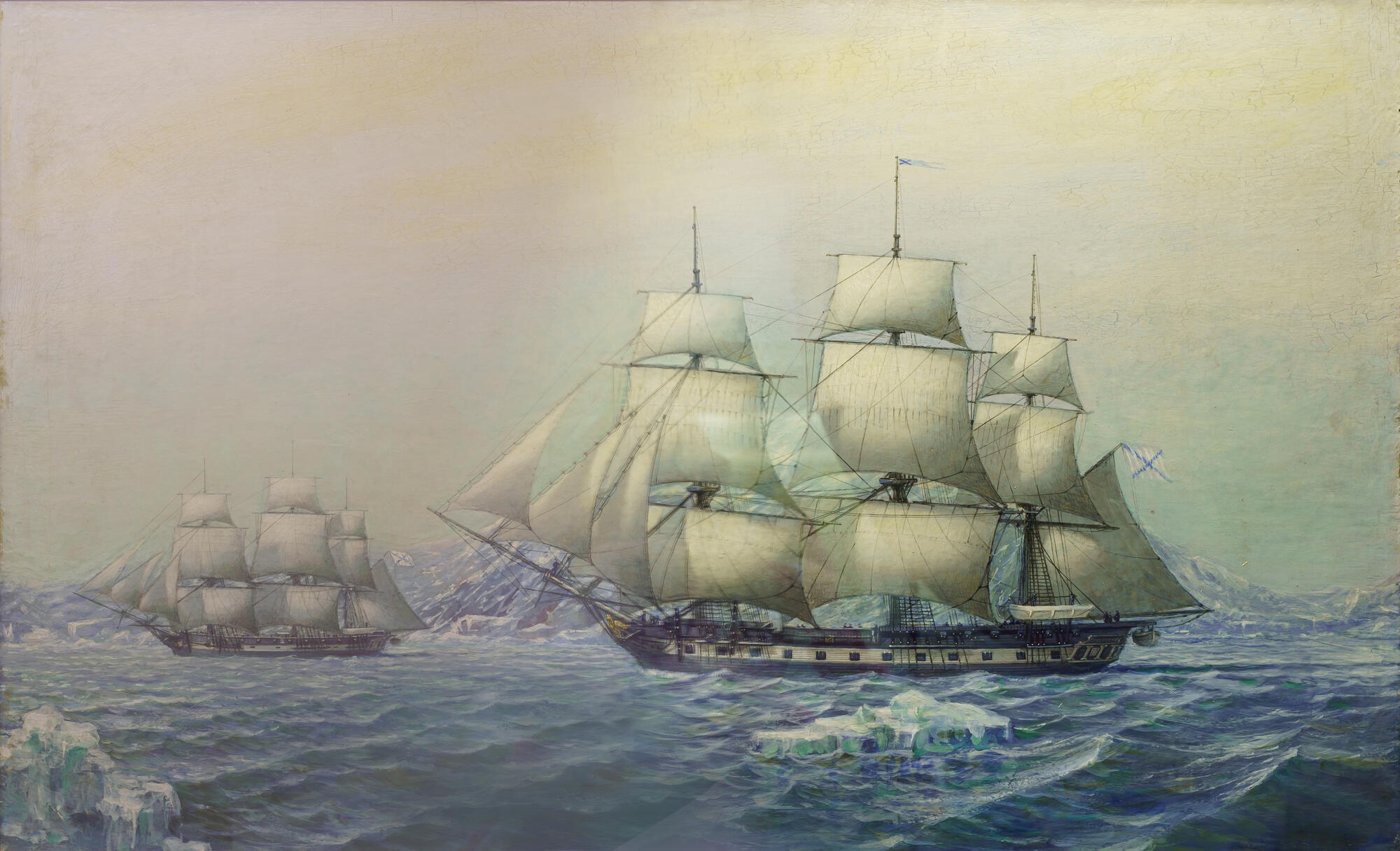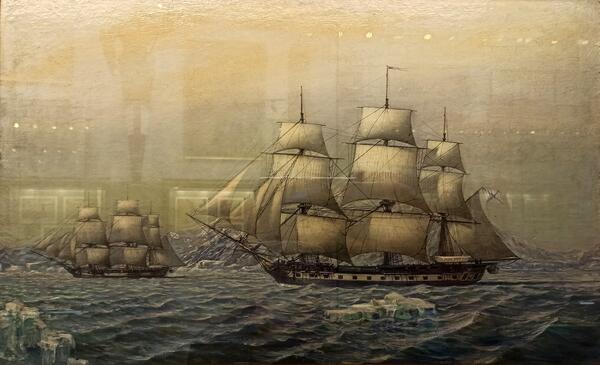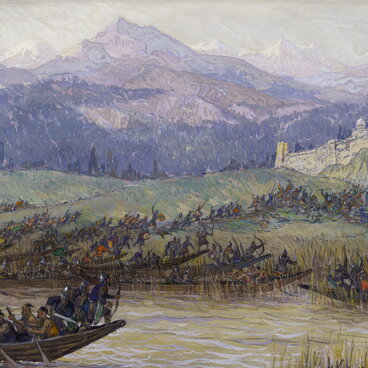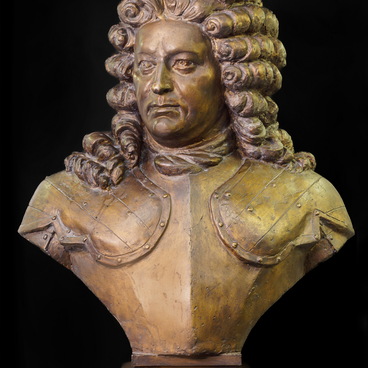One of the milestones in the history of humanity was the First Antarctic Expedition led by Russian Navy officers — the captain of 2nd rank Fabian Gottlieb von Bellingshausen and lieutenant Mikhail Petrovich Lazarev. Two sloops were equipped for the expedition: the 900-ton “Vostok” under the command of Bellingshausen (11 crew members) and the 530-ton “Mirny” under the command of Lazarev (70 crew members). The expedition members were recruited from volunteers.
On July 4, 1819, the “Vostok” and “Mirny” sloops sailed from Kronstadt. The expedition was instructed to explore the South Georgia and the South Sandwich Islands. No one knew how exactly it could be done. However, the “Vostok” and “Mirny” crews succeeded. They managed to describe in detail the island of South Georgia and to identify that the South Sandwich was an archipelago rather than a single island.
On January 27, 1820, the ships crossed the Antarctic Circle, and the next day, they came close to the ice barrier of the Antarctic continent. January 28, 1820 went down in history as the day the Antarctic continent was discovered. On February 5 and 6, the ships approached the edge of rocky mountain ice, and the commander of the expedition concluded that they had found “the continent of ice”.
As the Antarctic winter was approaching, Bellingshausen decided to go to Port Jackson (modern-day Sydney, Australia) to repair the ships, let the crew rest, and replenish the stocks. After that, he once again led the ships to the coasts of Antarctica. The closer they approached the Antarctic Circle, the more difficult their journey became. Sailing between floating ice and icebergs, the sloops turned south whenever it was possible. On January 10, 1821, they reached the southernmost point of their journey at 69°21’42” S. Heading in the northeastern direction, the expedition discovered numerous islands and put them on the map. Soon, Bellingshausen came to the conclusion that the hull of the “Vostok” sloop was rundown, and further sailing in high southern latitudes was dangerous. Because of that, on January 30, 1821, the sloops turned north, and on February 27, they arrived in Rio de Janeiro. At the end of April, they left the harbor of the Brazilian capital and headed to Russia. On July 24, 1821, the expedition returned to Kronstadt.
The expedition lasted 751 days, and the overall length of the route amounted to 100,000 km — two and a quarter equatorial circumferences of the Earth. The crew put 29 new islands on the map. The scientific results of the world cruise on the “Vostok” and “Mirny” sloops exceeded all expectations.
On July 4, 1819, the “Vostok” and “Mirny” sloops sailed from Kronstadt. The expedition was instructed to explore the South Georgia and the South Sandwich Islands. No one knew how exactly it could be done. However, the “Vostok” and “Mirny” crews succeeded. They managed to describe in detail the island of South Georgia and to identify that the South Sandwich was an archipelago rather than a single island.
On January 27, 1820, the ships crossed the Antarctic Circle, and the next day, they came close to the ice barrier of the Antarctic continent. January 28, 1820 went down in history as the day the Antarctic continent was discovered. On February 5 and 6, the ships approached the edge of rocky mountain ice, and the commander of the expedition concluded that they had found “the continent of ice”.
As the Antarctic winter was approaching, Bellingshausen decided to go to Port Jackson (modern-day Sydney, Australia) to repair the ships, let the crew rest, and replenish the stocks. After that, he once again led the ships to the coasts of Antarctica. The closer they approached the Antarctic Circle, the more difficult their journey became. Sailing between floating ice and icebergs, the sloops turned south whenever it was possible. On January 10, 1821, they reached the southernmost point of their journey at 69°21’42” S. Heading in the northeastern direction, the expedition discovered numerous islands and put them on the map. Soon, Bellingshausen came to the conclusion that the hull of the “Vostok” sloop was rundown, and further sailing in high southern latitudes was dangerous. Because of that, on January 30, 1821, the sloops turned north, and on February 27, they arrived in Rio de Janeiro. At the end of April, they left the harbor of the Brazilian capital and headed to Russia. On July 24, 1821, the expedition returned to Kronstadt.
The expedition lasted 751 days, and the overall length of the route amounted to 100,000 km — two and a quarter equatorial circumferences of the Earth. The crew put 29 new islands on the map. The scientific results of the world cruise on the “Vostok” and “Mirny” sloops exceeded all expectations.



